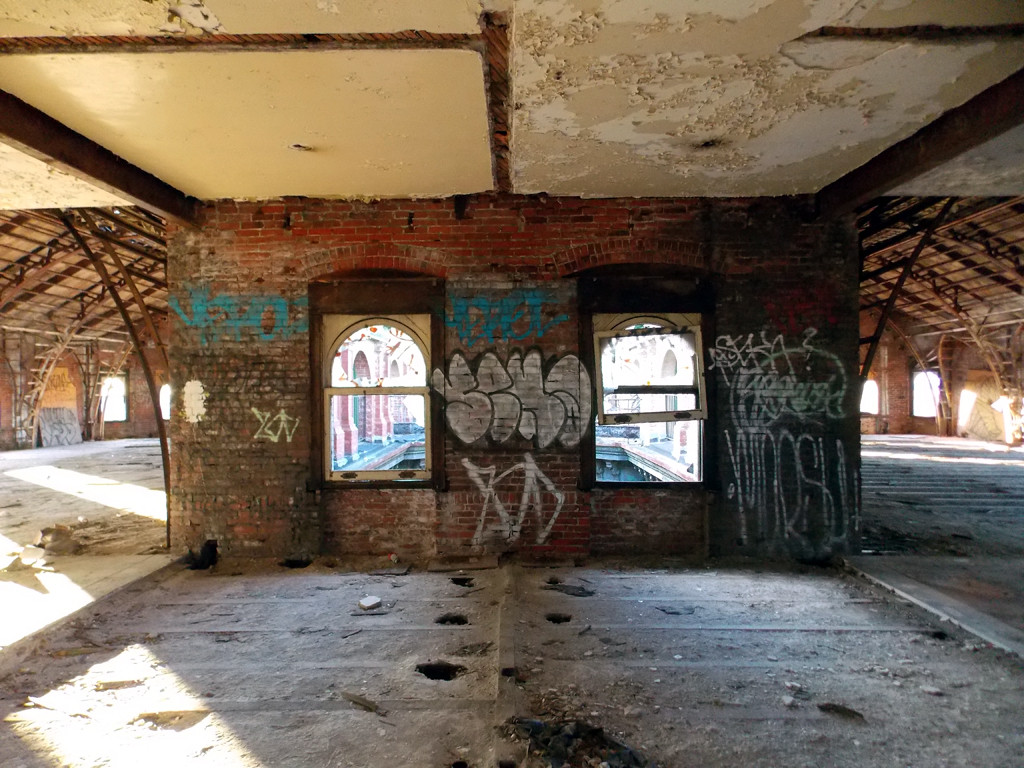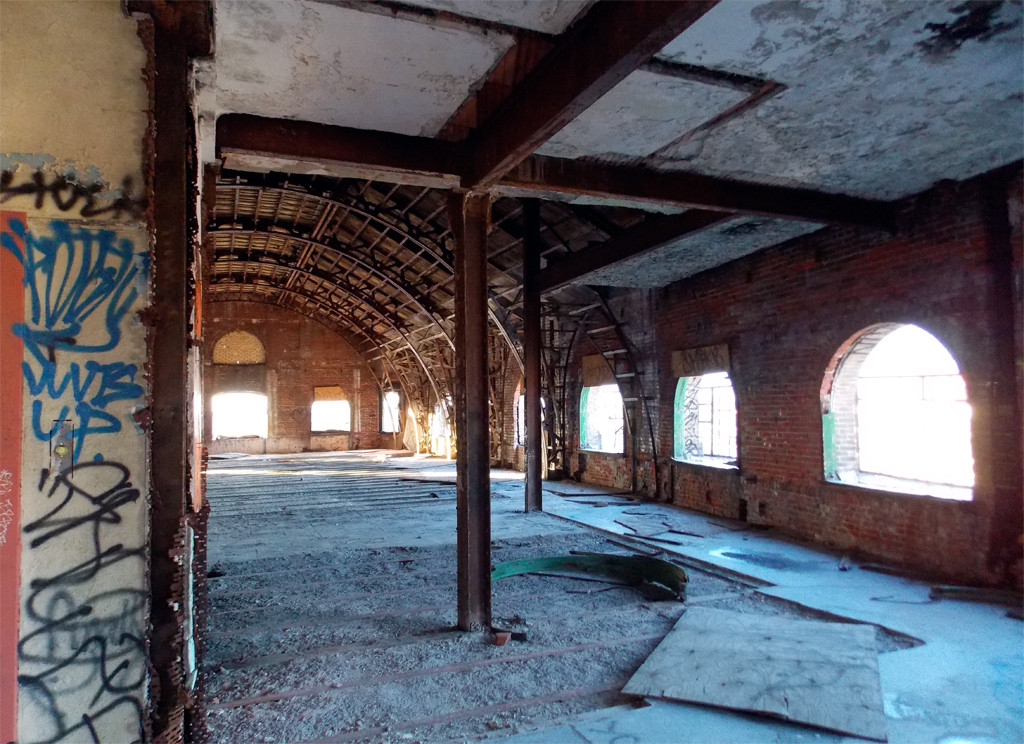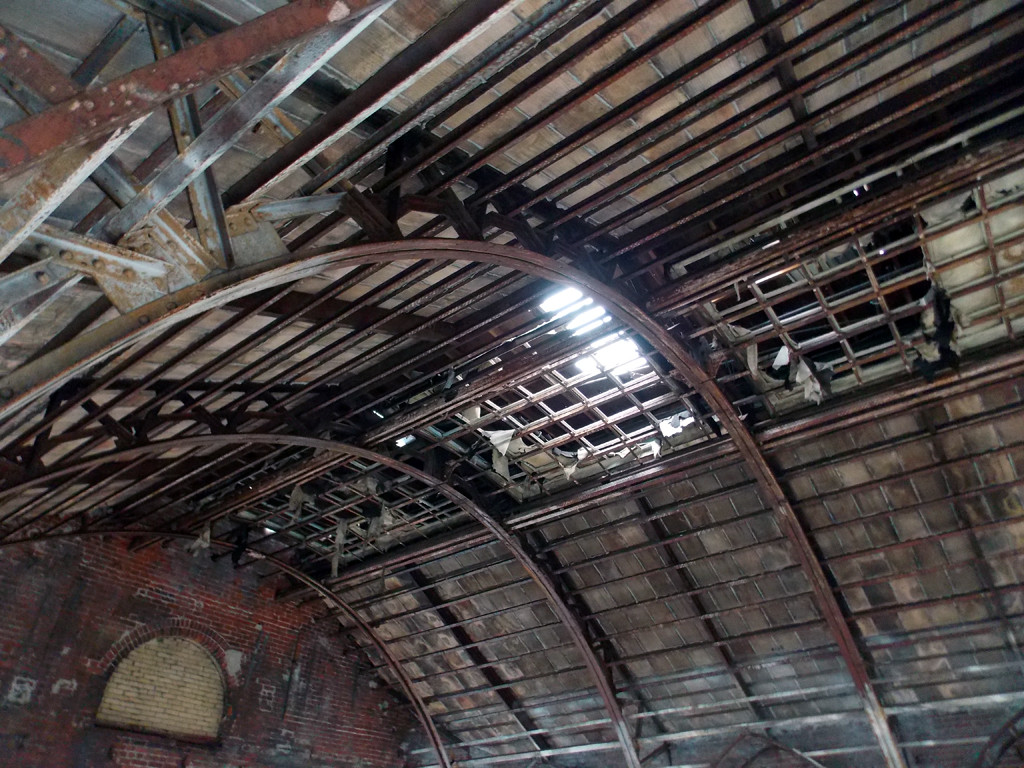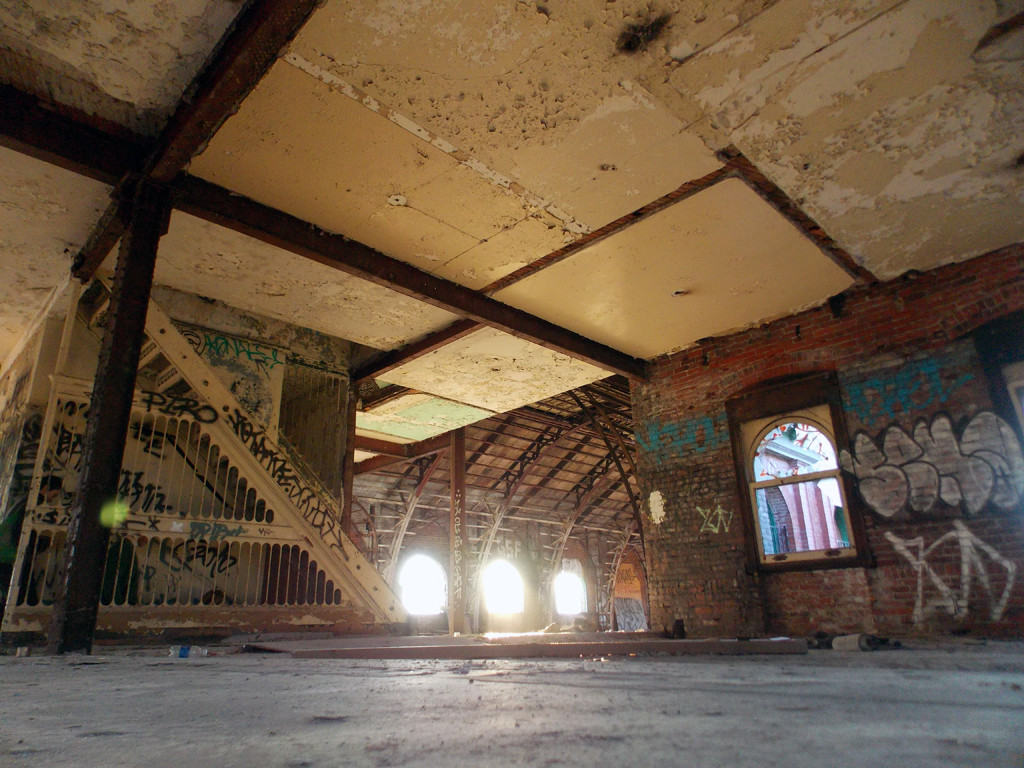EXPLORATIONS
Exterior of the Divine Lorraine as seen in 1971.
The Divine Lorraine Hotel
Built: 1894
Status: Vacant / In Development
Explored: December 2012
The Divine Lorraine Hotel stands triumphantly vacant at the intersection of North Broad and Fairmount streets in North Philadelphia. Designed by Philadelphia-based architect Willis G. Hale and built between 1892-1894, the once lavish Divine is now an icon that represents historical wastefulness and urban neglect.
Originally named the Lorraine Apartments, the building once boasted two large penthouse ballrooms and an in-house staff that drew a wide range of the city's wealthiest residents. The apartments were prosperous for decades until the pits of the Great Depression were dug into the American economy, and the building went on to be sold in 1948 to Reverend Major Jealous Divine, founder of the International Peace Mission movement. More commonly referred to as Father Divine, the religious leader came from an upbringing cloaked in secrecy, which complemented his checkered past marred with accusations of sexual misconduct, contempt of court, and loose ties with the Communist Party in the 1940s. He did however petition for civil rights at the peak of his power, but later denied that he was black based on his distaste of racial labels as he neared his final years.
Upon his acquisition of the building in 1948, Father DIvine immediately renamed it the Divine Lorraine Hotel and opened its doors to people of all races and classes, so long as they were committed to following his word. The Divine Lorraine was the first hotel in the United States to be fully racially integrated, and guests were expected to abstain from smoking, drinking, and profanity. Additionally, men and women were required to live on separate floors of the building. Father Divine transformed each of the two penthouse ballrooms into worship halls and later opened the ground floor kitchen as a low-cost alternative for hungry Philadelphians.
The International Peace Mission movement would lose traction following the 1965 death of Father DIvine, as radical leader Jim Jones created the Peoples Temple organization and began adopting several of Father Divine's teachings. Jones unsuccessfully tried to gain leadership of the International Peace Movement, and later headed the Jonestown Massacre, which was responsible for 909 deaths via cyanide poisoning. This mass suicide helped coin the term "Drinking the Kool-Aid," as Jones mixed the lethal doses of cyanide with the flavored drink before distributing it to his followers.
One of the two penthouse ballrooms, 2006. Photo © The Kingston Lounge.
The Divine Lorraine was once one of the most striking buildings in the city, but has since fallen into neglect and near disrepair over the past few decades, somewhat appropriately symbolizing the decline of Father Divine's movement. It has long stood boarded up and covered with graffiti, and now acts as an apex of urban exploration for many locals, despite recent efforts to seal the building from outsiders. Some may recall the story of a Temple University student surviving a five-story fall through a hole in the floor, which convinced new owner and developer Eric Blumenfeld to fortify the entry points.
I toured the interior in December 2012 with a group from Next City along with Bob Gollwitzer, Project Manager at EB Realty Management Corporation, the development firm that most recently purchased the building in 2012.
Gollwitzer mentioned that the foundation of the Divine Lorraine is so strong that it could easily support a building two or three times its height. High-rises were rare at the time of its construction in the late 19th century, so engineers heavily fortified its base despite topping out at just 125 feet. While a vertical addition is unlikely in the redevelopment of the Divine Lorraine, Blumenfeld appears committed to working with the community to determine the best overall use of the structure moving forward.
As you look at the photos below, you might be just as shocked as I was to discover that the building is completely empty inside. No doors, no walls, no books or bathtubs lying anywhere. The Divine Lorraine is merely a shell of its former self, eagerly awaiting care and development.
For photos of the interior before it was gutted, head over to The Kingston Lounge.
All photos © Zach Patten unless otherwise noted.

























